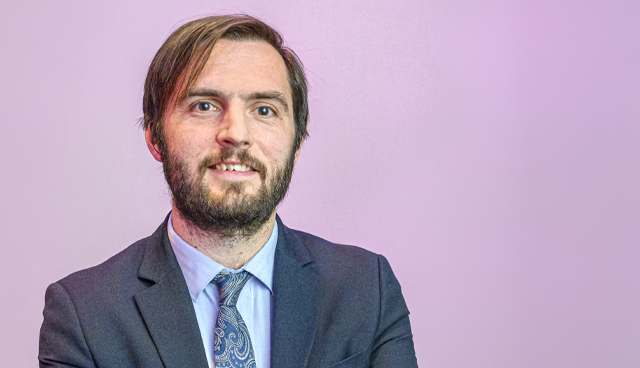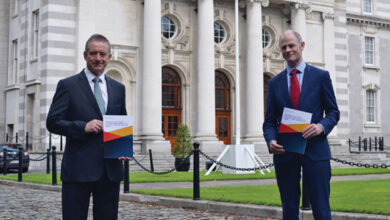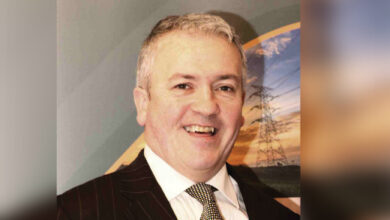The ‘No Excuses’ campaign

Andrew Payne, Ministerial Liaison Officer for the Department of Justice and Equality, talks to eolas about the ‘No Excuses’ campaign, targeted at combatting sexual violence, and how the public’s digital reaction to the campaign has become an aspect of the advertising itself.
“Our vision as a Department is to create a safe, fair and inclusive Ireland,” Payne says. “Our campaign against sexual violence and harassment touches on all three of those; it’s about making an Ireland that is safer, fairer and more inclusive for everyone who lives here. The Department has recently completed a transformation process and we hope that will allow us to better communicate digitally with the public as we go forward.”
The ‘No Excuses’ campaign is the second half of a six-year campaign, which is part of the National Strategy on Domestic, Sexual and Gender-based Violence. “Normally, when you work in government departments, you have very little budget when it comes to putting out some of your messages, so we’re very privileged that we’ve been given the opportunity by the Government to get funding for a six-year campaign,” Payne says.
The first half of the initiative was a domestic violence campaign called ‘What Would You Do?’, which Payne calls “a good learning experience”. ‘What Would You Do?’ ran for three years between 2016 and 2018 as a so-called “bystander campaign”. Its most notable ad featured a woman babysitting for her sister. When the sister and her partner return from a night out, the sitter wishes them well and the couple go to bed. On the baby monitor, she hears a domestic abuse situation happening. The question put to the viewer was: what would you do in that situation?
“One of the criticisms people have made over time is that we have criticised the victim, so the aim here was not to do that and likewise some offenders can be reached by campaigns,” Payne says, explaining the rationale behind the campaign. “Other offenders have more deep-rooted issues and a social media campaign isn’t going to touch on that, but something we can all do is consider what we would do if we come across it.
“We took some criticism for that and it’s something we tried to learn from in this [current] campaign in terms of not solely looking at the bystander approach. Overall, we felt we had good cut through with the campaign; 72 per cent of the population recalled seeing the campaign, nearly double the norm for a public awareness campaign.”
The terrain of public and online discourse around sexual harassment and violence has been altered significantly in the time since the beginning of the Second National Strategy on Domestic, Sexual and Gender-based Violence in 2016; the #MeToo movement and the Belfast rape trial are two examples Payne cites as having challenged entrenched thinking and opened people’s eyes to the prevalence of such crimes.
“I think that [#MeToo] would have existed without social media, but I’m not sure it would have quite the impact without the way people started talking about their personal experiences online,” he says. “That was something we really had to think about with this campaign, likewise the Belfast rape trial. It’s something we tried to reflect on in our digital work.”
Payne then goes on to explain how ‘No Excuses’ has been carried out thus far in three targeted online bursts: an initial one upon the launch of the campaign in May 2019, one at the end of autumn into the Christmas season and a final one from St Valentine’s Day, through the Six Nations, to St Patrick’s Day. “People think of Valentines’ Day, a very romantic day, but there are difficulties in some relationships, and we thought it was an opportune time to reflect on that. Likewise, when it comes to the Six Nations, lots of us are sports fans and we had the trial, which brought up questions about sporting culture. It also means that more people will be out in the pub and it is the occasions when people have had a lot of alcohol that sometimes these instances happen. It’s the same with St Patrick’s Day, for a lot of people it’s a time of heavy intoxication.
“Something we were thinking of at the end of our last burst at the end of autumn was the Christmas party season. This is obviously a time when inappropriate behaviour happens. That gave us an opportunity to zero in on our key demographics and hit them with targeted messages through social media advertising that we thought would be relevant on days we identified like the last few Fridays before Christmas that we thought would be the time of most work Christmas parties.”
“I think that [#MeToo] would have existed without social media, but I’m not sure it would have quite the impact without the way people started talking about their personal experiences online.”
Before undertaking the campaign, the Department (in conjunction with stakeholders such as the Rape Crisis Network, the HSE and Gardaí) carried out a baseline survey in order to determine where attitudes were and what groups required special targeting across the intersections of age, region, class and gender. “There were different attitudes across the population, a lot of what we found was reassuring. A lot of people do think what we consider unacceptable is unacceptable,” Payne says.
“We did notice a difference with all people under 35, but particularly males under 35. We don’t just stand back and say these males are a problem, we have to consider why there are problematic attitudes there and ask what we can do as a society.
“The most worrying trends we found were that men under 35 were more likely to agree that women exaggerate claims, we showed them a series of actions and they were less likely to rate any of them as severe sexual abuse. That age group were the least likely to rate a series of behaviours as sexual violence or abuse. They were also more likely to agree that there are certain situations where sexual intercourse without consent is justified.”
The Department have now strengthened their laws around sexual offences and each unit of the Gardaí is now rolling out a divisional detective services unit of staff specially trained for these offences, Payne says. The CSO is currently undertaking the National Sexual Violence Prevalence Survey, in order to update the national data concerning these offences, and it will be built into the CSO’s work programme that it is repeated every 10 years. A review of the experiences of people who have been vulnerable witnesses in the prosecutions of these offences is also being carried out in order to improve such experiences.
The focal piece of the second half of the campaign was an ad featuring both male and female perpetrators and victims in scenarios such as sexual harassment in the work place, unwanted physical attention at a bar, an attempt to expose someone in a locker room, an attempt to coerce a partner into unwanted sexual activity and an attempt to prey on someone not in a position to give consent. The ad was focus grouped before its release, preparing the Department for some of the criticism that was to come online; in order to combat this line of thinking, the ad was released in its original form on a Friday and then again the following Monday, with some of the focus group’s excuses for the behaviour overdubbed as the situations unfold.
“Something else we have done is taken some of the comments we have seen online, both positive and negative, and collate them. We put them up in bars and cinemas, where we overlaid pictures of the ads with some of the comments. The intention was for this to be jarring and make people think: ‘would I tweet something like that?’,” he says.
“We don’t want to just throw things out there and not monitor it, we have a campaign advisory group and strategy monitoring group looking at how our digital reach is progressing. At the end, we’ll repeat the baseline research and see if there has been a difference, hopefully there will be,” Payne concludes.





